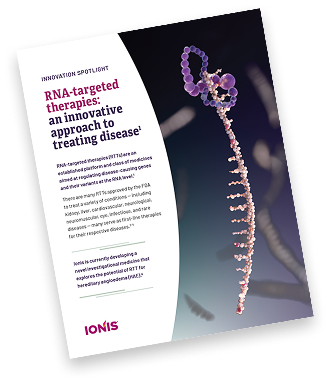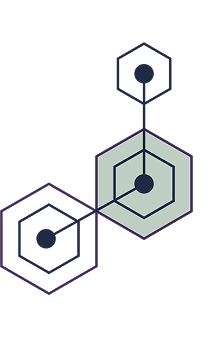New potential therapeutic targets and technologies for HAE
Swelling attacks occur in patients with hereditary angioedema (HAE) when there is excess bradykinin. Existing small-molecule drugs and biologics, such as monoclonal antibodies, aim to bind with relevant proteins to help inhibit the subsequent release of bradykinin, while plasma derived and recombinant C1-INH therapies aim to replace a missing protein.8,11
Plasma prekallikrein (PKK), a key effector in the kallikrein-kinin system, represents a unique HAE target.8
The kallikrein-kinin pathway in HAE12
C1 inhibitor (C1-INH) plays a key role in regulating the production of bradykinin in the kallikrein-kinin pathway.
When its function is reduced or defective, bradykinin is overproduced, ultimately resulting in HAE attacks.12
In the absence of sufficient or functional C1-INH, FXIIa activates plasma PKK to form plasma kallikrein13
A positive feedback loop of plasma kallikrein generates additional FXlla, which further activates the pathway14
Plasma kallikrein then cleaves HMWK to release bradykinin, a peptide that causes inflammation and widens blood vessels1,13
Bradykinin binds to its receptor on blood vessel walls, leading to vasodilation, fluid leakage, and subsequent angioedema.1,13
In patients with HAE, this process is unregulated and occurs excessively, resulting in abnormal and persistent swelling.13
The therapeutic potential of RNA technology⁸
An established modality, RNA-targeted medicines have been approved by the FDA to treat a variety of conditions, including kidney, liver, cardiovascular, neurological, neuromuscular, and rare diseases, among others.15
RNA-targeted medicines have evolved rapidly and contain several chemical modifications and features that enhance their therapeutic potential.15,16 Benefits include:
1
Selective targeting of a single gene product to alter gene expression without altering a patient’s genome15
2
Regulation at the RNA level before protein translation begins15
3
Allowing for receptor-mediated delivery of the RNA-targeted medicine to a particular organ or tissue, for instance hepatic parenchymal cells, by leveraging ligand-conjugated antisense (LICA) technology (eg, GaINAc)17
4
Reversible effects, unlike gene therapy15


Innovation Spotlight: RTTs
Learn more about the history of RNA-targeted therapies (RTTs), the current therapeutic landscape, and the underlying science behind RTTs.

Approaches beyond RNA are in development for HAE11,13
– Small-molecule competitive antagonists that aim to target disease-causing proteins11
– Additional monoclonal antibodies that aim to target disease-causing proteins11
– Gene therapies that aim to modify DNA13
Sign up to receive updates, resources, and clinical information about HAE
